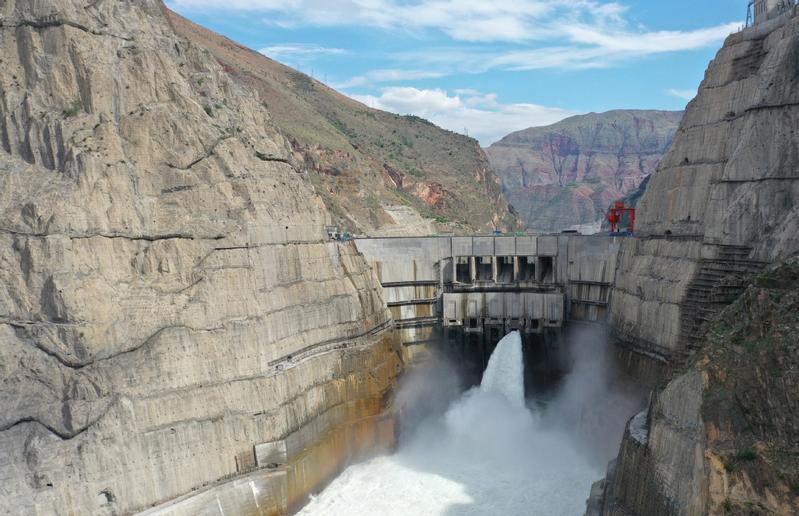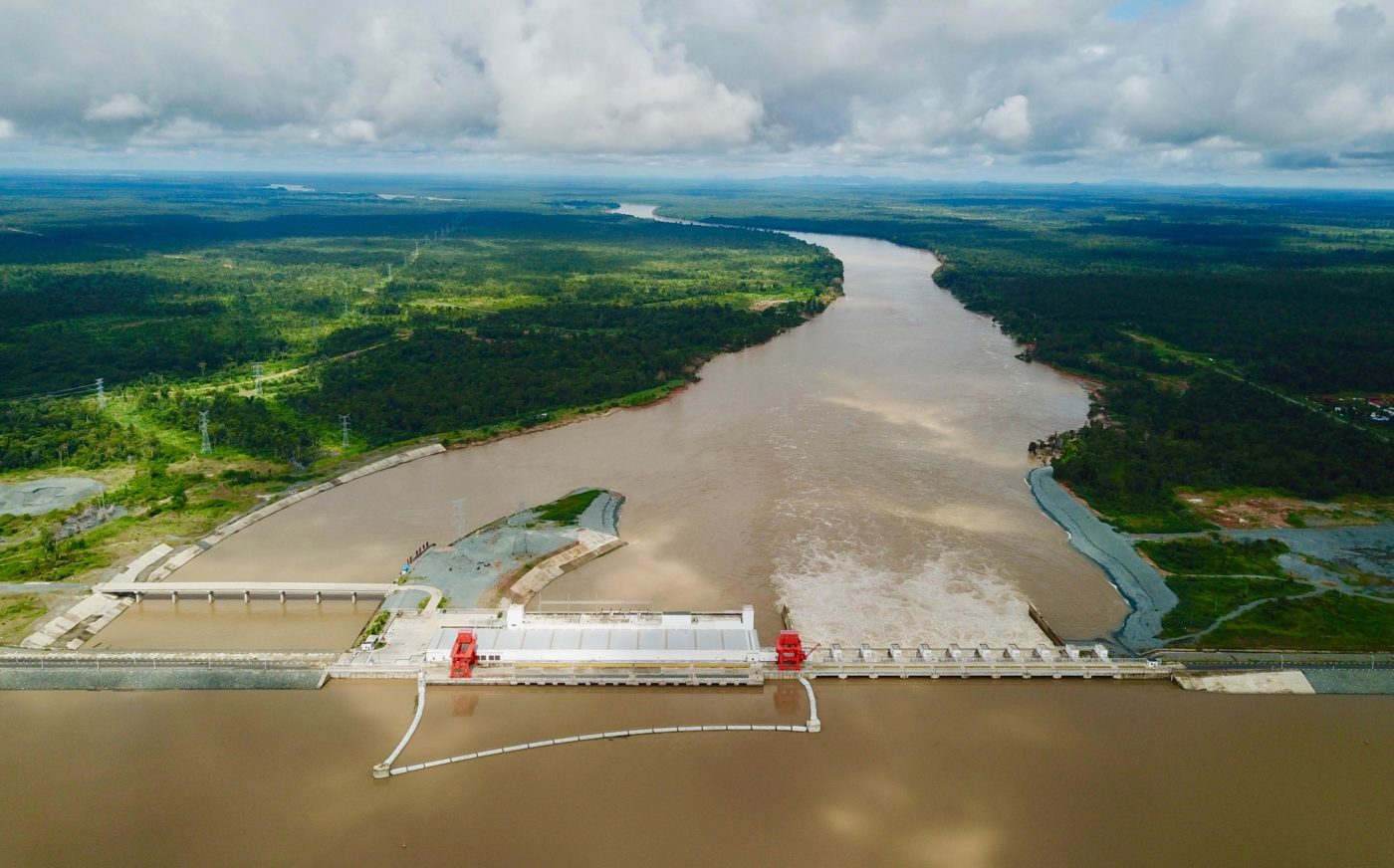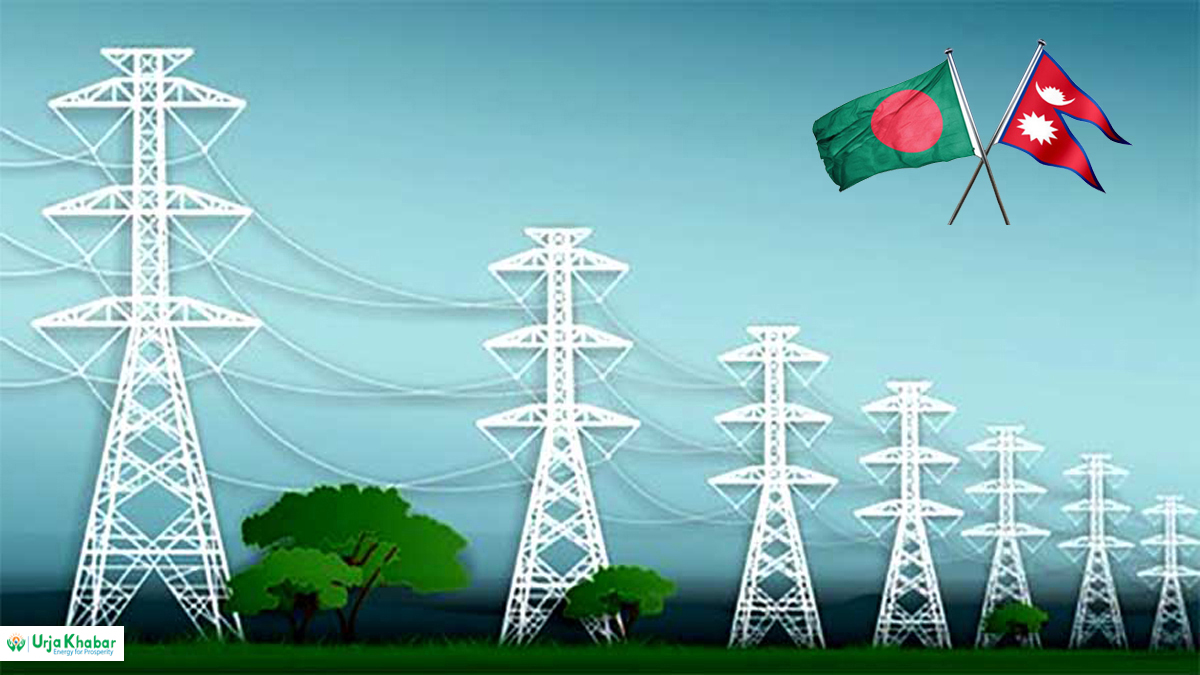Energy Update
What are the impacts of dams on the Mekong river?

China completed its first mainstream hydropower dam on the Mekong, the Manwan dam in Yunnan province, in 1995, and has since planned and built 10 more. Eleven hydropower dams are in various stages of planning and construction in Laos and Cambodia on the mainstream of the Mekong river, along with hundreds of dams on its tributaries.
The Mekong river originates in the Himalayas in China, where it is known as the Lancang. It flows through the Lower Mekong Basin countries of Myanmar, Thailand, Laos, Cambodia and Vietnam, where it reaches the South China Sea. An engine of immense biodiversity, the Mekong feeds jungles, irrigates crops for tens of millions of people, and supports the most productive inland fishery on the planet: Tonle Sap lake.

Energy demand is expected to increase by 6-7% each year in the Lower Mekong Basin through to 2025, and hydropower has proved an important alternative to fossil fuels. Between 2005 and 2015, electricity generation from Lower Mekong Basin hydropower increased from 9.3 GWh to 32.4 GWh.
Hydropower is also valuable to Lower Mekong Basin countries as a source of income and foreign investment. The Xayaburi dam in Laos, for example, is one of only two completed dams on the lower Mekong mainstream and sells more than 95% of the power it produces to neighbouring Thailand. Economic gains from hydropower development are expected to rise to as much as USD 160 billion by 2040, according to the Mekong River Commission.

As Southeast Asia adapts to climate change, reservoirs developed for hydropower and flood-control dams can be useful in irrigation projects, and have the potential to assist with water supply given dramatic changes between the dry and wet seasons.
Hydropower dams have had a dramatic effect on the Mekong river over the last two decades, resulting in unseasonable flooding and droughts, low water levels in the dry season, and drops in the amounts of sediment carried by the river, with drastic consequences for biodiversity and fisheries.
Exacerbated by climate change and a lack of cross-border communication, the cumulative effects of mainstream dams present a danger to the forests, mangroves and fisheries that depend on the Mekong’s waters.
Sediment carried by the river from as far away as the Tibetan plateau is essential to the unique ecology of the Mekong basin. However, large hydropower dams prevent significant amounts of sediment from flowing downstream. With river sediment impacting floodplain soil fertility, reduced sediment loads could have consequences for the more than 60 million people in Southeast Asia who rely on the Mekong for their income, from agriculture to fishing and aquaculture.
The sediment that has flowed from Yunnan province in China to Vietnam for thousands of years has been severely depleted due to the relatively recent spate of hydropower dams built on the Chinese stretch of the river, as well as large-scale mining of sand from the riverbed. This has resulted in the collapse of riverbanks downstream in highly populated areas of the Mekong delta, causing homes and roads to be washed away.
Upstream fish migration is hindered by dams when the fish cannot get over the spillway or through turbines. Those that manage to pass through may be killed by the force of current, or barotrauma, resulting from sudden changes in pressure. Hydropower can also prevent downstream migration, with larvae and adult fish unable to cross the dam itself or navigate large bodies of standing water created by the dams.
The Mekong’s wider biodiversity relies heavily on the natural and predictable flooding and receding, or pulse, of the river’s waters. Beach-nesting birds and fish are seriously impacted by unseasonable flooding of the Mekong caused by dams and water releases.
The decline in the Mekong’s fisheries alone is predicted to cost nearly USD 23 billion by 2040 and poses risks to riparian communities and indigenous peoples who rely on fish for sustenance and livelihoods.
There are hundreds of dams on the Mekong’s tributaries. For example, the Lower Sesan 2 dam – less than 25 kilometres from the Mekong mainstream – became Cambodia’s largest hydropower project when it came online in 2018, blocking the Sekong and Srepok rivers from feeding the Mekong and displacing thousands of people.
The last of the Nam Ou hydropower cascade of seven hydropower dams in Laos, financed and built by the state-owned Power Construction Corporation of China, came online by 2020. The dams were built without measures being put in place to mitigate their environmental impacts and rob the Mekong of much-needed sediment, which the Nam Ou would naturally draw down from high elevations. In addition, the cascade of hydropower dams has reportedly caused a loss of kai, a freshwater plant which is a staple food for riparian communities, with a particular impact on women in these communities.
Every year, the Mekong floods and forces the Tonle Sap river in Cambodia to flow backward, creating the largest lake in Southeast Asia. With more than a million people living on the floodplain and in floating villages, including many stateless Vietnamese, Tonle Sap is one of the most productive inland fisheries on Earth.
The lake expands to 60% of its low water size to approximately 16,000 square kilometres, providing migrating fish with a crucial breeding ground. The lake’s ecology relies on the natural flood patterns of the Mekong, which have been disrupted by development and hydropower on the mainstream of the river.
In 2019, a combination of climate change, El Niño and dams on the Mekong resulted in the Tonle Sap river flowing backward for weeks rather than months, leaving the lake’s water warm, shallow and oxygen-starved. That year, fisheries in Tonle Sap were estimated to have declined 80-90%.
Low water levels in Tonle Sap lake have also caused difficulties for rice farmers, who depend on seasonal flooding. As flood levels become more uncertain, local communities have been forced to compete for irrigation resources, or leave to find work in cities.
Combined with destructive rice-cultivation practices that damage the surrounding scrubland and grassland, the breakdown of the ecology of the Tonle Sap lake endangers a number of bird species which breed in the area, such as the spot-billed pelican and Bengal florican.
In response to public outcry, in 2020 the Cambodian government suspended construction of dams on the mainstream of the Mekong until at least 2030, including the Sambor dam only around 150 kilometres from Tonle Sap lake.
Second only to the Amazon in number of species, more than 1,000 freshwater fish species have been recorded in the Mekong river and its tributaries. 160 species also migrate along the river to and from their breeding grounds. Research published in a 2018 report by the Mekong River Commission warned that hydropower development on the river would result in fish stocks declining dramatically, shrinking the total biomass by 35-40% by 2020 and 40-80% by 2040.
Some efforts have been made to mitigate the impacts of dams on fish populations, with the Xayaburi dam in Laos using techniques such as fish ladders which enable migrating fish to bypass the main dam. Experts, however, have been critical of these measures as untested and incapable of dealing with the massive biodiversity of the Mekong river, which can move as much as 30 tonnes of fish an hour.
According to the Mekong River Commission, 68 fish species recorded from the Lower Mekong Basin are globally threatened. Large species such as the Mekong giant catfish have decreased in number by more than 90% in two decades.
The Mekong River Commission (MRC), an entirely advisory body, was set up in 1995 between Cambodia, Laos, Thailand and Vietnam, and provides research, surveys and coordination of development on the management of water-related resources in the Lower Mekong Basin. China is only an MRC Dialogue Partner, not a member of the body.
Most recently, the MRC has released a Basin Development Plan 2021-2030 and a Five-Year Strategic Plan detailing plans to better understand the development and climate change challenges facing the river.
Funded by the four member countries and donors that include foreign governments, the MRC has no authority to stop a dam from being built on the mainstream of the Mekong. However, the MRC can play an important advisory role through a process called Procedures for Notification, Prior Consultation and Agreement (PNPCA). This months-long process involves MRC members reviewing the potential benefits and risks of mainstream Mekong projects against environmental, safety, development and other related concerns.
No country is bound to abide by the decisions of the MRC. Two hydropower dams, Xayaburi and Don Sahong, have completed the PNPCA and are operational. Four others have undergone the PNPCA process but have yet to officially begin construction (Pak Beng, Pak Lay, Luang Prabang and Sanakham).
Laos has been accused on at least two projects of proceeding with preliminary construction despite lacking PNPCA approval. The Sanakham dam project, only two kilometres from the Thai border, had its PNPCA approval process blocked when it was found to have plagiarised sections from a previous dam project; its status is currently pending.
Originally proposed by China’s Premier Li Keqiang, the Lancang-Mekong Cooperation (LMC) framework was launched in March 2016. The LMC acts as China’s development arm along the Mekong river, facilitating projects including the ambitious Laos-China Railway.
While the LMC has not elevated hydropower generation as a focal point of its mission, hydropower plays an important role in China’s overall development goals in the region.
In late 2020, the US government created a new framework for its own plans for the region, the Mekong-US Partnership, pledging USD 153 million to the Greater Mekong Subregion.
A lack of data from upstream in China has proved to be a source of contention with downstream nations, particularly after the extreme droughts of 2019, which were exacerbated by continued Chinese investment in hydropower projects both on its own section of the Mekong and downstream.
LMC and MRC meetings enabled the creation of the Lancang-Mekong Water Resources Cooperation Information Sharing Platform in 2020, which provides regular updates of hydrological data from China, thus ensuring more transparency regarding China’s section of the river.
Though China agreed to share year-round data on the Mekong, since then, other monitoring platforms using near real-time satellite data as well as on-the-ground water level stations have given a clearer picture of reporting transparency. The new data has suggested that China has occasionally not given timely notification for water releases and restrictions, and also elucidates the effects of hydropeaking, where peak power production hours can cause rapid raising and lowering of water levels downstream.
The Mekong should naturally appear brown due to high sediment levels. As sediment is increasingly blocked or taken from the Mekong, the river will likely turn blue more often in the dry season, as was the case in the 2019 drought and more recently in February 2021. Low river levels in recent years have meant an abundance of green algae blooms, the effects of which are as yet unknown.
Prospects for the future of the Mekong’s fisheries remain grim. According to the MRC’s development scenarios mapped out in 2018, the total weight of fish in the Lower Mekong Basin will fall by 40-80% by 2040, while sediment in the Mekong could be reduced by 67-97%. The fisheries sector, the report states, is likely to decline substantially in all four lower Mekong countries.
A rapid phase-out of coal and other fossil fuels is urgently needed to keep emissions trajectories within 2 degrees of warming above preindustrial levels. Hydropower dams will continue to be a focus of energy infrastructure investment in China and the Lower Mekong Basin. While little civil society activity exists in Laos or Cambodia to resist China’s development ambitions, environmental groups in Thailand and Vietnam have been more direct in their opposition.
A number of dams, including Pak Beng and Pak Lay in northern Laos, remain suspended despite approval from the MRC, and the Sanakham dam’s future depends on finding a power purchase agreement with neighbouring Thailand.
The Third Pole
Conversation
ऊर्जा सम्बन्धी नेपालको पहिलो अनलाइन पत्रिका
- Info. Dept. Reg. No. : 254/073/74
- Telephone : +977-1-5321303
- Email : [email protected]













